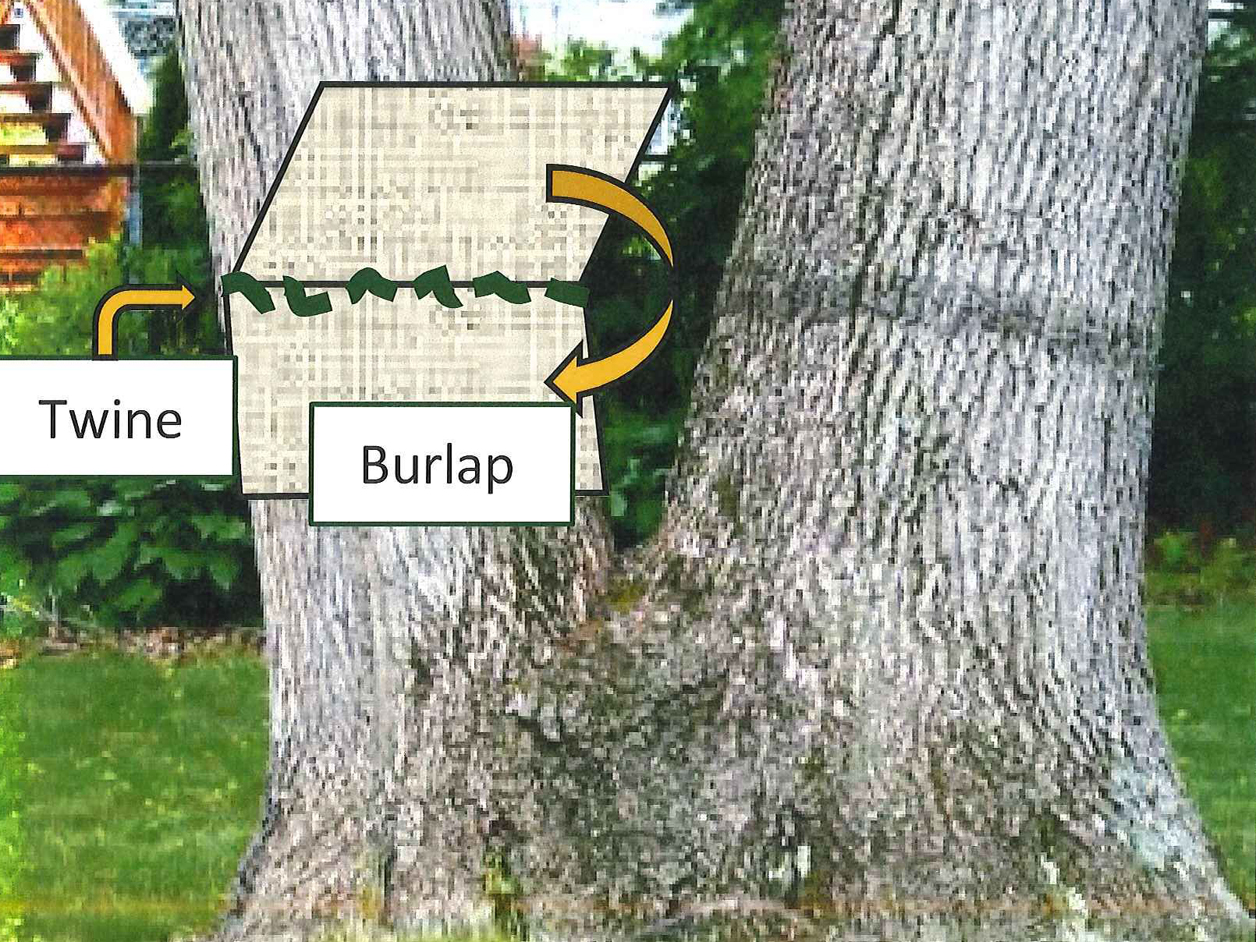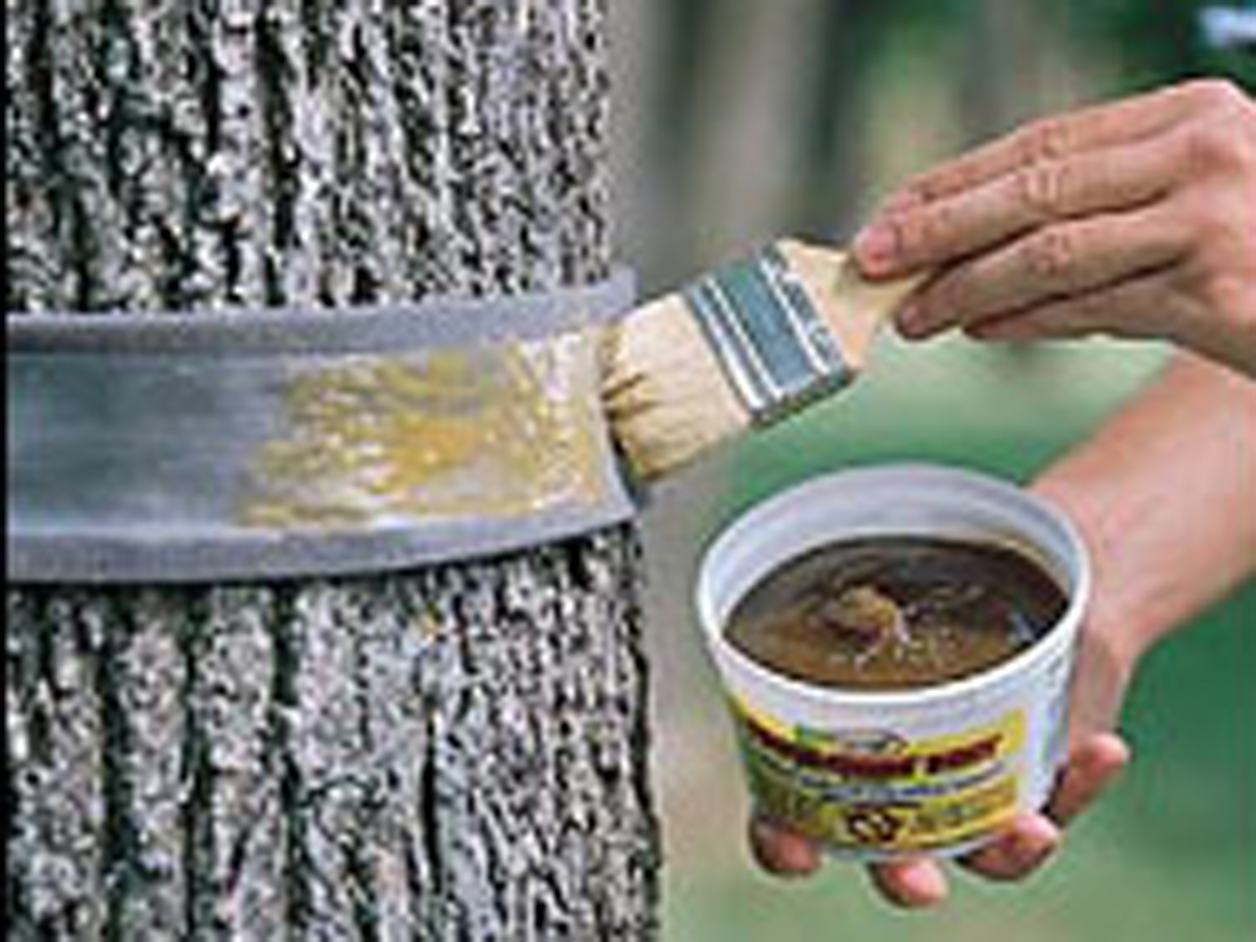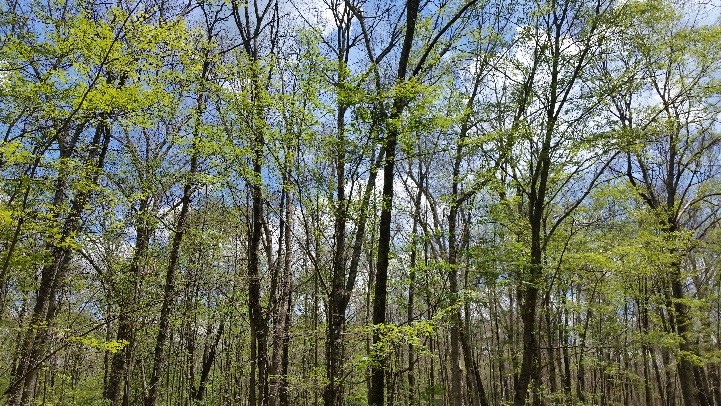The Spongy Moth: Information for Tree and Woodland Owners
"Spongy moth" has been formally adopted as the new common name for the moth species Lymantria dispar (formerly known as the gypsy moth) by the Entomological Society of America. The new name comes from a translation of a French name based on the destructive forest pest's sponge-like egg masses. You can learn more about the name change from the Entomological Society of America.
Background Information
Advice for Individual Tree Owners
Advice for Woodland Owners
Additional Information

Female spongy moths laying eggs.

Spongy moth caterpillar

Spongy moth pupae

Adult male spongy moth
Background Information for Tree and Woodland Owners
What life stage of the spongy moth causes damage?
-
The spongy moth caterpillar is responsible for the damage to trees - the other life stages do not attack trees. The egg masses, pupae, and fluttering adults can all be nuisances, however.
Why should I be concerned about increased spongy moth activity?
-
In most years, spongy moth caterpillars are relatively scarce and there is no need to treat for spongy moths.
-
During outbreak years, damage due to the spongy moth can be severe. It is often too late to respond to the damage once it has become apparent - the response is best if it occurs either before the spongy moth larvae have attached or before they have become large and at their most voracious. Inspection of your property for spongy moth egg masses is the best way to know of the potential for an significant increase in the number of spongy moth caterpillars.
How do spongy moths damage trees?
-
The spongy moth mainly damages trees by defoliating them - that is, by consuming all or almost all of its leaves. Without leaves, a tree loses most of its capability to photosynthesize. Without photosynthesis, the tree cannot produce the resources it needs to survive.
-
Defoliation also stresses a tree making it more vulnerable to diseases and other insects. Also, stressed trees may not be able to withstand environmental problems, such as drought.
Can a tree survive a spongy moth infestation?
-
A healthy tree defoliated by the spongy moth will normally grow back it leaves in the second half of the summer, after the spongy moth caterpillars are gone.
-
A healthy tree will usually be able to survive two or three successive bouts of defoliation. After that, it is often too weakened to stand up to other pests. It is these other pests or environmental problems, such as drought, that end up killing a spongy moth-weakened tree.
-
Key among these other pests are the two-lined chestnut borer and the honey fungus (Armillaria sp. - known by many common names, including shoestring root rot).
-
It is worth noting that, in 2016, many trees did not grow back their leaves following defoliation. This was probably due to the drought and did affect the health of these trees.
Advice for Owners of Individual Trees and Smaller Properties
(The next several questions are written from the perspective of a spongy moth outbreak being likely in the next year or in progress.)
What should a tree owner do?

Numerous spongy moth egg masses.

Defoliated plum tree (June)
- Determine if spongy moths are likely to feed on your trees. Oaks are the spongy moth caterpillar's first choice, but it will readily consume beech, birch, elm, maples, and most other hardwoods. During heavy infestations, it will also consume pine, spruce, and hemlock needles. It tends not to feed on ash and tulip poplar.
- There are many resources available to assist with tree identification.
- If you have trees that spongy moths like, determine if spongy moths have been a problem in your area (in your town or otherwise nearby.) If the spongy moth population has been growing in numbers locally, it could be about to show up on your property.
- Good sources for this information are the Connecticut Agricultural Experiment Station Insect Inquiry Office and your local tree warden. Feel free to ask them if the spongy moth has been active in your town.
- Scout for spongy moths on your property.
- This is especially helpful to do during the off-season for the spongy moths - late summer, fall, winter, or early spring.
- Mostly, in the off-season, you are scouting for egg masses. Egg masses are tan, cottony, and somewhat tear-droped in shape - about 1 inch high by 1/2 wide. You can find them on the trunks of trees and up into the crown, and on nearby structures, including on the sides of garages and houses. Egg masses are often in semi-hidden locations, such as under bark flaps or under the eaves on houses.
- Scattered egg masses are probably not a problem. Numerous egg masses could be.
- Contact a CT licensed arborist for assistance if you are concerned. If action is needed, it is best taken early in the year. Once defoliation is underway, it can be difficult to keep up with the damage the caterpillars are doing. Also, arborists can become very busy, very quickly.
The Spongy Moth Fact Sheet, produced by the Connecticut Agricultural Experiment Station, is an excellent summary of what a tree owner needs to know in deciding what to do about spongy moth.
What else can a tree owner do?

Use of a burlap refuge band.
Illustration courtesy of CAES Fact Sheet.

Applying a commercial sticky material.
Photo courtesy Mississauga website.
-
During the off-season, use a spray bottle to soak the egg masses with a mixture of agricultural soap or horticultural oil. These applications are relatively easy to apply and are unlikely to cause any environmental harm.
-
Because egg masses tend be hidden under flaps of bark or in other hard-to-spot locations, or higher up in the trees, the effectiveness of these sprays is limited. However, any treatment will help reduce the number of caterpillars next year.
-
Egg masses can also be scraped off surfaces. In this case, be careful to catch and destroy the eggs. Otherwise, they can still hatch and cause problems.
-
During the season when the caterpillars are active, tree owners can use burlap refuge bands or sticky bands around a tree to catch these caterpillars, which can then be destroyed. If using sticky bands, be careful not to apply any of the sticky material directly onto the bark of the tree. These materials can damage the bark and, in some cases, severely harm the tree. Place a protective barrier around the tree first.
-
Regular, even daily, servicing of these bands is critical. Otherwise, the number of caterpillars trapped will just build up and the bands will lose their effectiveness.
Can insecticides be used to treat spongy moths?
- A summary of the insecticides that an arborist might consider in treating for the spongy moth can be found in the Spongy Moth Fact Sheet. Homeowners are cautioned against the use of chemical treatments on their own, for two reasons:
- First, several of the listed chemicals are not intended for use by non-professionals. In particular, those labeled as "restricted use" are to be sold only to those professionals who are licensed as pesticide supervisors.
- Second, many of the chemicals need to be applied by means of a spray application, reaching up into the crown of the tree, using equipment not normally available to a homeowner.
Are there other means of controlling spongy moths?
-
Biological options do exist for the spongy moth. Besides the maimaiga fungus and the NPV virus, a bacterial-based treatment often called BTK (for bacillus thuringiensis var. kurstaki) can be applied in the same manner as a chemical treatment. This might be the preferred treatment where watercourses and sensitive natural areas are nearby.
Why should I hire an arborist?
-
Arborists are licensed because they have shown that they are able to diagnose tree problems and to recommend solutions to these problems. It is not just about what works - safety and awareness of environmental concerns are critical parts of being an arborist. This awareness applies to the use of insecticides. Arborists are expected to be experts in the treatments they use, as well as in their knowledge of trees and pests.
How do I find an arborist?
-
A complete listing of all CT licensed arborists is available on the Kelly Solutions website.
-
The Connecticut Tree Protective Association (CTPA) is another source for information. Note that not all Licensed Arborists in Connecticut are members of the CTPA.
Advice for Woodland Owners

Defoliation in an oak forest in 2016.
I own several acres of woodlands. Are the recommendations different for me as a woodland owner?
-
For woodland owners, it is not practical and usually not desirable to use such direct control methods as pesticides. Because a forest is a dynamic system, the overall health of the system is the more important thing. But, that is not to say that a woodland owner should not be concerned about the health of his or her individual trees.
What should a woodland owner do?
- Determine, in your woods, whether or not the local spongy moth population is in outbreak status or about to enter into this status. You can do this by:
- During the late spring and early summer, walking your woods to determine whether or not spongy moth caterpillars are present and in what numbers. In an outbreak, they will be all over the place, including, in the earlier instars, descending from trees on their webs.
- During the off-season (from mid-summer to late April), walking the woods and looking for spongy moth egg masses. If there are lots of egg masses, a large number of caterpillars can be expected to hatch the following spring.
- Woodland owners are encouraged to contact a Connecticut Certified Forester if a heavy defoliation has already occurred and a second, heavy defoliation is anticipated. Certified Foresters are trained to examine woodlands and assess for spongy moth risk factors such as:
- Tree species composition,
- Overall woodland health,
- Potential for future gypsy moth defoliation, and
- How secondary effects such as drought and other insects might play a role in the future health of the woods.
How do I find a Connecticut Certified Forester?
-
Woodland owners should be aware that not everyone who works in the woods is a Certified Forester. The Directory of Certified Forest Practitioners lists 3 categories of Certified Forest Practitioners. Only a Certified Forester has the legal authority to design silvicultural practices to battle the effects of the spongy moth on woodlands.
Some of my trees appear to be dying. Can they be salvaged?
-
In extreme cases, the combination of spongy moth defoliation and secondary effects such as drought can kill a tree. If significant amounts of tree mortality are occurring in your woods, a salvage timber harvest may be appropriate.
-
Before taking this step, it is strongly advised that a woodland owner contact a Connecticut Certified Forester. The role of the Certified Forester is to protect the woodland owner's interest. A Certified Forester is qualified to determine the need for a salvage harvest and the potential value from such a harvest. A Certified Forester also has the legal authority to, at the request of the landowner, act as the landowner's agent in a sale of timber.
-
If a salvage harvest is warranted, it is best to harvest the dead and dying timber early, as the value of the wood degrades rapidly once a tree dies.
What other harmful effects might the spongy moth have on my woods?
-
There is a concern that, in defoliated woods, there may be an increased risk of fire. This is especially so under drought conditions. When trees are defoliated, more light reaches the ground, helping to dry the leaf litter and woody debris that lies on the forest floor. Woodland owners are encouraged to keep track of the level of fire danger through DEEP's Daily Forest Fire Danger Report web page.
Can I do anything to protect my woodlands from spongy moth damage?
-
The most important thing to do is to maintain your woodlands in a state of good health. Healthy trees will have a much greater ability to withstand the effects of repeated spongy moth defoliations, drought, diseases, and insects. Working with a Connecticut Certified Forester, a management plan can be developed that will establish an effective path towards maintaining your woods in the healthiest condition possible.
-
In dealing with severe spongy moth damage, Connecticut woodland owners may also be able to receive assistance through the USDA Natural Resources Conservation Service. Connecticut's NRCS office is located in Tolland.
Additional Information
The Spongy Moth in Connecticut: An Overview

